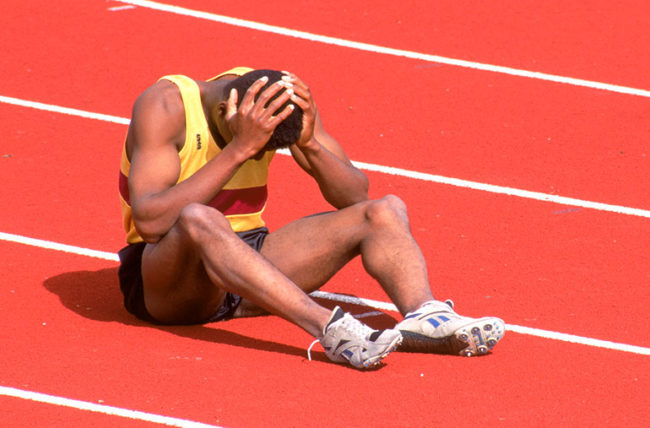Dealing With Athletic Injuries
Throughout an athlete’s career, they will more than likely experience an injury that will impact them mentally and physically. Athletes can lift, go through various trainings and such, just for the prevention of injuries, but at some point, they will and can happen. At the end of the day, depending on how the athlete copes with said injury, will determine on how long they will remain out of play and even training.
Dealing with an injury can be tough on an athlete, especially depending on the type of player they are. When dismissing an athlete from a game or even practice, along with giving them little to no attention could potentially prolong their mental and physical recovery due to added stress and anxiety. “Continuing to try to involve injured athletes in drills may alleviate this stress” (Gilbert et al., 2015, p. 34-35). Athletes that have played this sport for long periods of time can begin to feel as if they lose their self-identity and even self-worth because of the emotions that are tied to the sport. Making sure that the coaching staff and players are still involving and communicating with the injured athlete, can be a game changer for the duration of time that the athlete would be out.

If the athlete has some struggles with self-confidence, that can also be another factor with coping with an injury. “Higher levels of self-confidence have also been shown to positively influence recovery” (Russell, 2010, p. 41). Having a positive mental state of mind can help increase the rate that the athlete is recovering, but on the other end of the spectrum, with a negative attitude and self-talk, the process may inhibit or decrease the recovery rate as well. Having self-confidence in yourself when dealing with an injury can be a positive factor. When an athlete is sitting on the bench while their teammates are out playing, laughing, and such, it can really put a damper on the injured player, so having that self-confidence and saying, “I’ll be out there with them soon” or “I won’t fail or let myself down”. Those little comments of self-confidence or positive self-talk can go a long way.
When it comes to an athlete being injured, social support can benefit that player when it comes to recovering. Social support would be in the aspect of coaches, trainers, and parents. Coaches are a major part when it comes to the social support, especially during practice and when the athlete is working on recovery. Just simple feedback or some everyday interactions with the player could even go a long way. Athletes also perceive or need different levels of support. Some need a lot of reassurance and some need very little. “By implementing these acts into everyday interactions with injured athletes, coaches can reaffirm for those athletes that they do indeed have the necessary resources available to cope with the stress of injury” (Newman & Weiss, 2018, p. 347).
When recovering, some setbacks may come up along the way. How the athlete copes with that and their motivation to get better, will also determine how quickly they come back. When dealing with an injury, it is likely that a setback will occur, meaning that the recovery rate may decrease a bit as well. Some setbacks could involve taking a week off to give the injury or rehab a break, going lighter if the athlete is back to lifting during rehab, and other similar situations. This can happen when the athlete is overdoing it and wanting to return to play quicker than they can. When doing this, this puts the injury at more risks and can potentially make it worse. “A team’s performance, however, often hinges on nonmotivational factors, such as injury, playing a better team, being overtrained, or failing to learn new skills” (Weinberg & Gould, 2019, p. 62). Being motivated to heal correctly, can help mentally for the athlete and then even physically for the athlete when they come back into play.
The last thing that comes with an athlete coping with an injury, would be dealing with the pain in general. Depending on the injury, the pain will vary. In 2012, 1.35 million children and adolescents suffered nonfatal sport injuries that resulted in emergency room treatments (Ferguson et al., 2013). Many injuries are from sprains, strains, fractures, broken bones, or even tears in the tendons or ligaments. Taking the steps to manage the pain, would benefit the athletes stress and how they recover and cope as well.
In conclusion, it takes a variety of psychological skills to cope with an injury. Communication between the player and the coach is a first step in helping the athlete cope. Some other skills that are also very beneficial for an athlete that is coping with an injury are self-confidence, social support, setbacks and motivations, along with coping with the pain itself.
References
Ferguson, R. W., Green, A., Sc Hansen, L. M. (2013). Game changers: Stats, stories and what communities are doing to protect young athletes. Washington, DC: Safe Kids Worldwide.
Gilbert, J. N., Lyon, H., & Wahl, M. (2015). Coping with the stress of athletic injury:
How coaches can help. Strategies, 28(4), 33-39.
Newman, N. D., & Weiss, W. M. (2018). Relationship between demographic variables and
collegiate athletes’ perceptions of social support from head coaches. International
Journal of Sports Science & Coaching, 13(3), 343–348.
Russell, W. D. (2000). Coping with injuries in scholastic athletics. Journal of Physical
Education, Recreation & Dance, 71(7), 41-46.
Weinberg, R. S., & Gould, D. (2019). Foundations of sport and exercise psychology.
Champaign, IL: Human Kinetics.